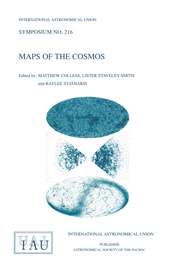No CrossRef data available.
Article contents
A Multi-Wavelength Study of the Oxygen-Rich AGB Star CIT 3: Bispectrum speckle interferometry and dust-shell modelling
Published online by Cambridge University Press: 26 May 2016
Extract
CIT 3 is an oxygen-rich long-period variable evolving along the Asymptotic Giant Branch and is one of the most extreme infrared AGB objects. Due to substantial mass loss it is surrounded by an optically thick dust shell which absorbs almost all visible light radiated by the star and finally re-emits it in the infrared regime. We present the first near infrared bispectrum speckle-interferometry observations of CIT 3 in the J-, H-, and K′-band (resolution: 48 mas, 56 mas, and 73 mas). The interferograms were obtained with the Russian SAO 6 m telescope. While CIT 3 appears almost spherically symmetric in the H- and K′-band it is clearly elongated in the J-band along a symmetry axis of position angle −28°. Two structures can be identified: a compact elliptical core (eccentricity ~0.8) and a fainter north-western fan-like structure (full opening angle ~ 40°). The development of such asphericities close to the central star suggests that CIT 3 is in the very end of its AGB evolution or even in transition to the proto-planetary nebula phase where most objects are observed in axisymmetric geometry.
- Type
- Part III: Planetary Nebulae in the Scheme of Stellar Evolution
- Information
- Copyright
- Copyright © Astronomical Society of the Pacific 2003


